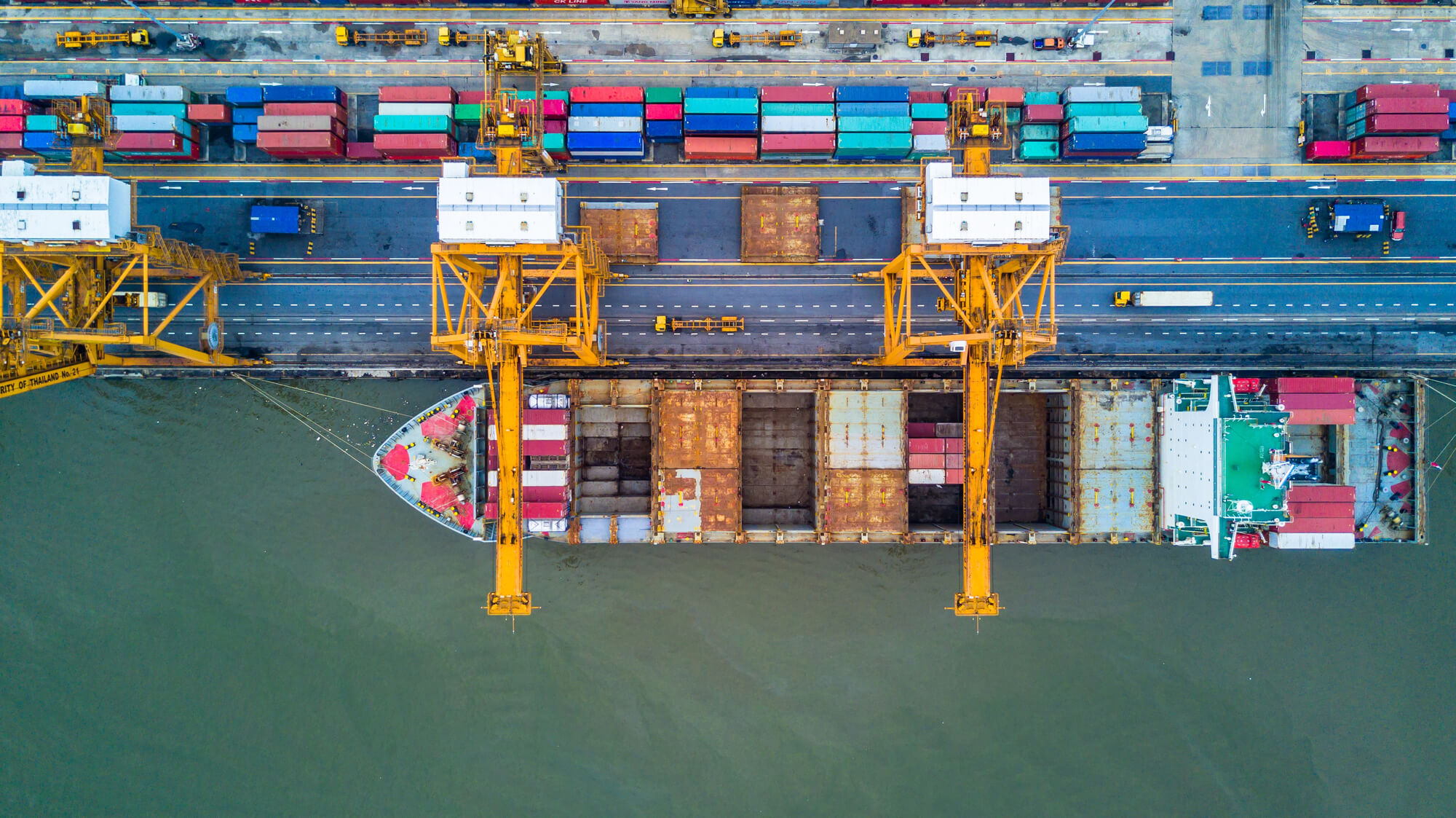On June 20, the Verkhovna Rada passed draft law 2207-1D on waste reform. Two hundred eighty-two MPs voted in favor. Already on July 7, the President signed the law to come into effect on July 9, 2023. It is Ukraine’s first waste management reform since gaining independence. What will change in our country regarding waste disposal?
Prerequisites for creating the Law
Work on waste reform began after the Cabinet of Ministers adopted the National Waste Management Strategy in late 2017 and the National Waste Management Plan until 2030 in 2019. Since then, national and foreign experts, employees of the Ministry of Environmental Protection and Natural Resources and the Ministry for Communities and Territories Development, and reform support experts from both Ministries worked on the text of a framework draft law on waste management, voted for in first reading in Parliament in July 2020.
The second reading text took two years to prepare. The parliamentary Committee on Environmental Policy and Nature Management did not hold a single official meeting to address this matter until October 2021. Instead, a series of informal discussions took place, adding about 400 new amendments without due process to the 1,600 amendments submitted by the MPs.
The public believed that most of the amendments aimed to dilute the reform. Only various stakeholders’ coordinated communications and actions fended off lobbyists, allowing the draft law’s sufficiently acceptable version to be voted on in Parliament.
Waste management reform’s main premise is that Ukraine today is, in fact, a sporadic landfill. Wartime waste has greatly worsened the situation. Here are some numbers from last year (as of now, the full-scale military invasion has exacerbated the problem):
Data for 2021
- over 90% of household waste is sent to landfill sites,
- 7% is recycled,
- 1.7% is burned.
Household waste is buried in 6,000 landfills and disposal sites. Their total area is about 9,000 hectares, commensurate with that of Khmelnytskyi. Of these:
- 230 landfills are overcrowded
- 824 dumps do not meet environmental safety standards
- 371 landfill sites require reclamation
Only 7% of waste is recycled in Ukraine, compared to at least 40% in the rest of Europe.
Since 2014, no permits have been issued for waste operations, including landfills and disposal sites.
Ukraine is the only country in Europe with no policy of extended producer responsibility in place.
We have almost no waste-processing technology and no European-style landfills.
Changes brought on by reform: from a carrier monopoly to a waste administrator
The system of burying waste has been in place in Ukraine for the past 30 years.
The system encompasses a so-called monopoly of carriers controlling the cash flow. However, only one aspect of comprehensive waste management services (i.e., collecting, transporting, sorting, processing, and disposing of waste) is actually implemented – garbage is hauled off. That’s about it. It is not easy to precisely track its journey and see what happens to it next. It is one of the reasons sporadic landfills still exist, and it is almost impossible to bring perpetrators to justice.
This waste burying system needs to be fundamentally changed, which is what Law 2320-IX does, providing for a waste administrator, i.e., a utility company supported by local budgets, whose tasks include allocating funds to pay for waste management services among providers.
Two considerations are important here:
- The Administrator does NOT provide services and therefore cannot occupy any part of the market.
- The Administrator does NOT choose companies to provide services; it is done by local self-government bodies (LSGBs).
It is advantageous to have an Administrator because it:
- ensures the functioning of a municipal household waste management system and deals with claims and lawsuits;
- creates a single database of consumer information for billing and payments for services consumed by them and does accounts payable work;
- calculates the weighted average fee and submits it in accordance with established procedures to the LSGBs;
- acts as a guarantor for investors regarding long-term investment funding for waste disposal projects.
The last point is essential since, in today’s conditions, no investor can be sure that the necessary amount of waste is delivered to them for processing to operate at a certain level of profitability and pay off the investment. LSGBs’ executive committees approving the fees are collegial bodies that cannot act as guarantors for investors since they do not dispose of the funds paid by service consumers. However, the Administrator can do it.
Blockchain for waste
Another vital reform component is introducing a unified state electronic waste system (e-waste). It will ensure the collecting, processing, storing, using, and exchanging of waste-related data and documents in electronic form, as well as electronic interactions between individuals and legal entities, state bodies, and LSGBs to implement waste laws.
The so-called “blockchain” for waste lets you track who generates, transports, and processes waste. This will finally make it possible to get rid of “nobody’s” garbage and become a guide for investors, helping them calculate the investment amount transparently.
The polluter will pay
Ukraine is the only European country with no extended producer responsibility (EPR) approach. EPR means “the polluter pays,” i.e., manufacturers are responsible for recycling the packaging waste they create.
Law 2320-IX provides legal mechanisms for introducing EPR in Ukraine in case it is supplemented with other EPR regulations clearly outlining its implementation mechanism, particularly draft laws on packaging and packaging waste, batteries and accumulators, electrical and electronic equipment, etc.
EPR is a financial and organizational mechanism obliging producers of goods to create individual or collective extended producer responsibility organizations (IEPRO, CEPRO). Manufacturers must bear the financial and organizational responsibility for collecting, recycling, and recovering waste generated from using their products.
Sorting out and recycling waste with the help of EPR will boost the development of Ukraine’s circular economy, resulting in new jobs, an influx of investments, and additional GDP.
EPR will allow communities to eliminate up to a third of waste (i.e., packaging) without significantly increasing fees for residents.
Such a mechanism has been developed in Europe for the past 30 years and has proven effective. Thanks to EPR, up to 80% of packaging waste is recycled in Europe.
For communities, the EPR mechanism is like a lifeline in the ocean of garbage they produce daily. In its initial implementation stages, it will enable communities, and therefore landfills, to eliminate a third of household waste (i.e., packaging). Moreover, it will be possible to eliminate packaging waste without increasing fees (a politically sensitive topic on the ground) by partially including the costs in the product prices.
With the vision regarding EPR not yet finalized, it is being discussed by reform support teams of the Ministry of Environmental Protection and Natural Resources and the Ministry for Communities and Territories Development. Based on these teams’ preliminary findings, collecting and processing packaging waste at the expense of LSGBs will extend to Ukraine’s entire territory seven years after adopting a particular law. During this process, the state will:
- adopt the law and by-laws;
- create an EPRO registry and carry out registration procedures;
- ensure the creation of an EPRO reporting system and verification of such reporting;
- create a Coordinating Committee if there are two or more registered CEPROs (collective extended producer responsibility organizations): a consultative and advisory body under the Ministry of Environmental Protection and Natural Resources that will consist of representatives of said Ministry, the Ministry for Communities and Territories Development, associations of local self-government bodies, makers of packaged goods, and their associations.
Local self-government bodies play a key role in creating the EPR mechanism. It is assumed that LSGBs will conclude contracts with the CEPRO (the Ministry for Communities and Territories Development is working on a standard contract) and take responsibility for collecting packaging waste generated in the communities. With several CEPROs in the country, contracts will be concluded with the CEPRO assigned by the Coordinating Committee for a given community. In turn, the CEPRO will:
- conduct competitive bidding for companies collecting, sorting, and processing packaging waste and organize their work;
- provide infrastructure for waste sorting and processing;
- pay for collecting and sorting garbage and its further processing;
- carry out information and educational activities for the population and legal entities.
It is envisaged that LSGBs will receive information from EPROs about the amount of collected and processed packaging waste within territorial communities, which will allow them to assess the achievement of the targets outlined by law on packaging and packaging waste (work in progress). With the poor organization of packaging waste collection, LSGBs can inform their CEPRO and the Coordinating Committee accordingly to take measures.
What will happen with the start of reform?
Waste management reform includes the introduction of national and regional waste management plans. Such plans would contain targets and indicators for waste processing, allowing for the proper functioning of waste management infrastructure in territorial communities. On September 10, 2021, the Ministry of Environmental Protection and Natural Resources approved the Methodical Guidelines for developing regional waste management plans. Communities can begin developing such plans after the law comes into effect.
The law also provides for:
- the waste management hierarchy. We first prevent the generation of waste, then we prepare for the reuse of waste whose generation we could not prevent, and only then do we recover or bury waste in safe landfills;
- a system of permits and licenses as no permits for waste operations have been issued in the country since 2014;
- tightened controls over hazardous waste generated within the country and imported from abroad;
- gradual closure (by 2030) and reclamation of hazardous landfills. Today, Ukraine has no European-style landfills for waste disposal, with the existing ones operating overtime with numerous violations of environmental laws.
What else is needed to get the reform fully launched?
The law on waste management will enter into force in eleven months. It is crucial to understand that it is a framework law, accounting for only 10% of the entire reform effort. By-laws and several special regulations on implementing EPR for individual waste streams and standardizing mining waste activities based on individual EU directives make up the remaining 90%. The Ministry of Environmental Protection and Natural Resources and APENA 2, a European Union project, are responsible for their development. It is essential that they soon present a road map for implementing by-laws necessary for the proper functioning of the law.
Waste reform is one of the large-scale reforms in environmental protection. It must simultaneously implement eight EU directives, including the Waste Framework Directive, the Landfill Directive, the Industrial Emissions Directive (in terms of waste incineration), on packaging and packaging waste, batteries and accumulators, waste electrical and electronic equipment, waste from extractive industries, end-of-life vehicles, and on single-use plastics. Specific draft laws have been developed, awaiting further discussion and adoption, e.g., “On batteries and accumulators” (2352), “On waste electrical and electronic equipment” (2350), and “On limiting the production and circulation of single-use plastic products on the territory of Ukraine” (6077).
Reform’s problematic moments
The law introduces the main European tools and approaches to waste management. Its main problem is retaining the current inefficient licensing system, as noted by the experts of ICO Environment-People-Law. As there are no ideal laws, other issues will arise during the practical implementation of the law. However, in cooperation with the authorities, civil society can identify problems and work on eliminating them. A constructive collaboration will help achieve the common good of reducing waste and improving Ukraine’s environmental situation.
Attention
The author doesn`t work for, consult to, own shares in or receive funding from any company or organization that would benefit from this article, and have no relevant affiliations



